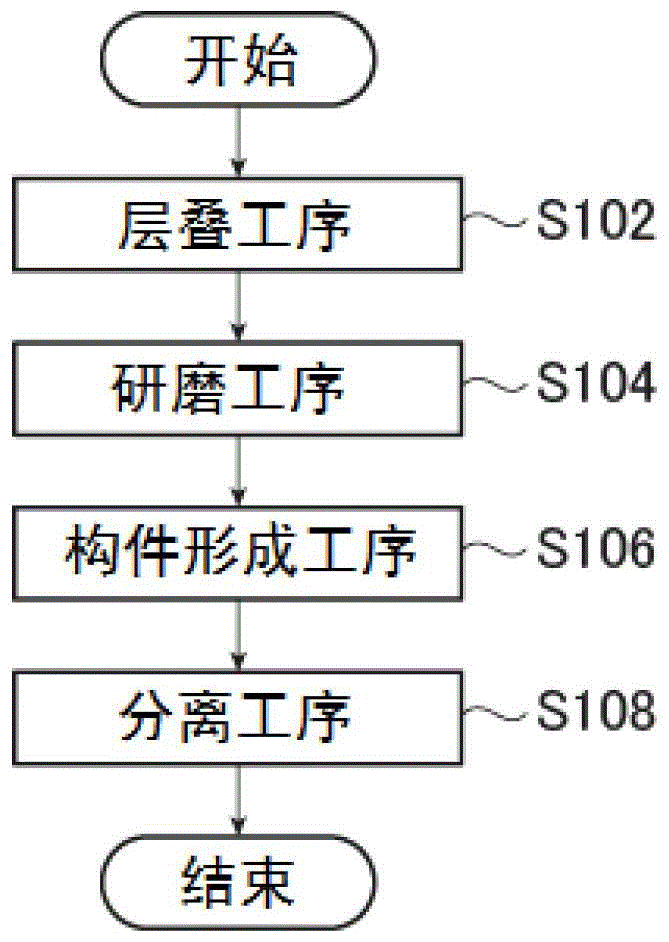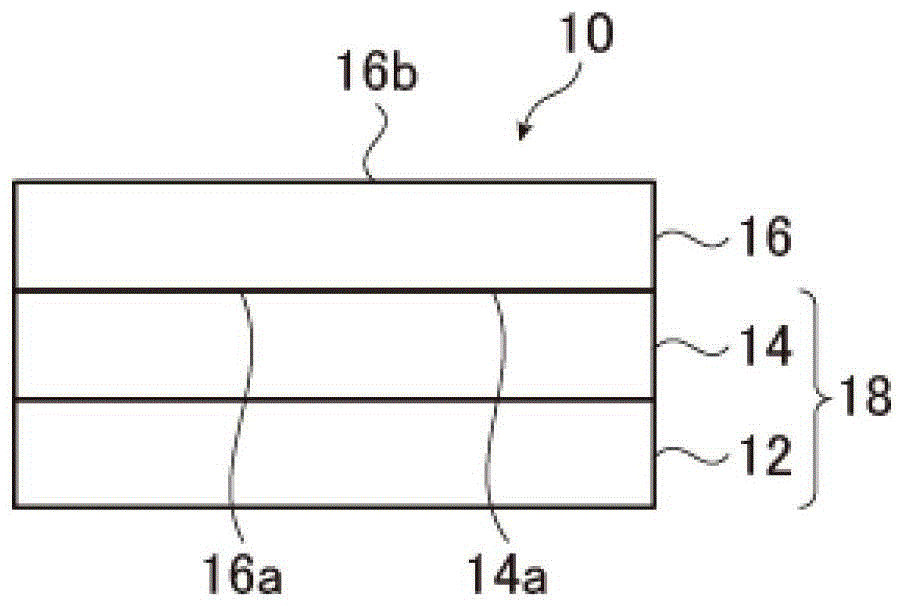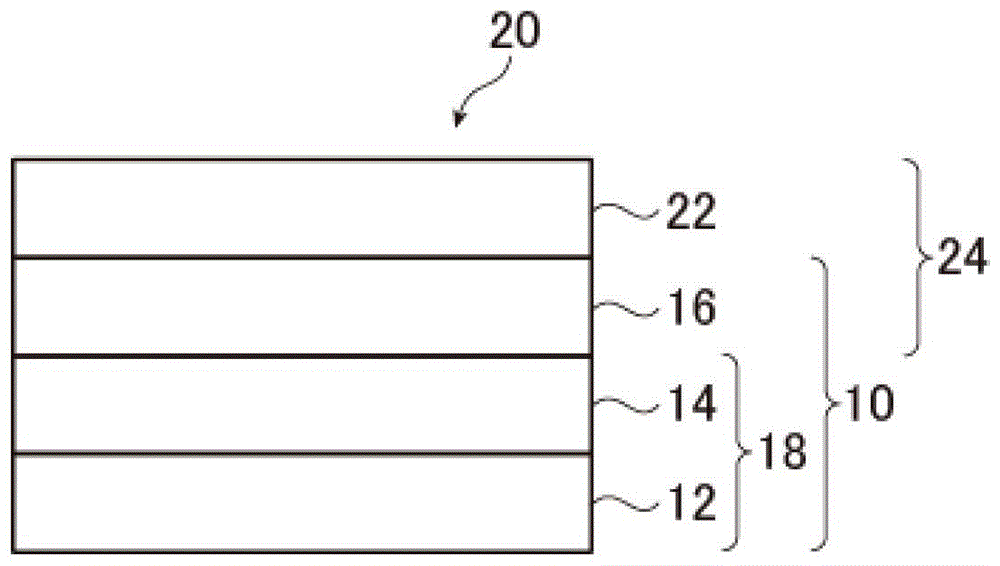Method for manufacturing electronic device and method for manufacturing glass laminate
A technology of electronic devices and manufacturing methods, applied in semiconductor/solid device manufacturing, chemical instruments and methods, glass/slag layered products, etc., can solve problems such as short circuit rise, circuit electrode disconnection, and difficulty in ensuring reliability, etc., to achieve Excellent flatness and the effect of suppressing the decrease in production yield
- Summary
- Abstract
- Description
- Claims
- Application Information
AI Technical Summary
Problems solved by technology
Method used
Image
Examples
Embodiment 1
[0198] Prepare a glass substrate ("AN100", linear expansion coefficient 38×10 -7 A non-alkali glass plate at / °C: manufactured by Asahi Glass Co., Ltd.) was used as a support substrate, and the surface was cleaned with purified water and UV to obtain a surface-cleaned support substrate.
[0199] Next, straight-chain vinylmethyl polysiloxane ("VDT-127", viscosity at 25°C: 700-800 cP (centipoise): manufactured by AZMAX Corporation, 1 mol of organopolysiloxane as component (A) The mol% of the vinyl group: 0.325), and the linear methylhydrogen polysiloxane "HMS-301" as the component (B), the viscosity at 25°C of 25-35cP (centipoise): manufactured by AZMAX Corporation , the number of hydrogen atoms bonded to silicon atoms in 1 molecule: 8), mixed in such a way that the molar ratio of all vinyl groups to hydrogen atoms bonded to all silicon atoms (hydrogen atoms / vinyl groups) is 0.9, With respect to 100 parts by weight of this siloxane mixture, 1 part by weight of a silicon compoun...
Embodiment 2
[0208] With respect to 100 parts by weight of the mixed solution of the organopolysiloxane composition obtained in the same steps as in Example 1, 43 parts by weight of heptane was added to prepare a mixed solution, and the obtained mixed solution was used with a die coater (coating speed: 40mm / s, GAP140μm, coating pressure 50kPa) onto the support substrate, let it stand at room temperature for 10 minutes, and then heat it at 180°C in the atmosphere for 60 minutes to cure to form a 15μm cured silicone resin layer. Other than that, in the same procedure as in Example 1, a glass laminate was produced and polished, and the polished glass substrate was separated. The various results are summarized in Table 1. Wherein, the filter centerline waviness (W CA ) is at the same level as the filter centerline waviness of the resin layer and is 0.100 μm or less.
Embodiment 3
[0210] After coating the mixed solution on the support substrate with a die coater, let it stand at room temperature for 30 minutes, and then heat it at 180° C. in the air for 60 minutes to cure it to form a 15 μm cured silicone resin layer. In addition, In the same procedure as in Example 2, a glass laminate was prepared and polished, and the polished glass substrate was separated. The various results are summarized in Table 1. Wherein, the filter centerline waviness (W CA ) is at the same level as the filter centerline waviness of the resin layer and is 0.100 μm or less.
PUM
| Property | Measurement | Unit |
|---|---|---|
| thickness | aaaaa | aaaaa |
| thickness | aaaaa | aaaaa |
| viscosity | aaaaa | aaaaa |
Abstract
Description
Claims
Application Information
 Login to View More
Login to View More - R&D
- Intellectual Property
- Life Sciences
- Materials
- Tech Scout
- Unparalleled Data Quality
- Higher Quality Content
- 60% Fewer Hallucinations
Browse by: Latest US Patents, China's latest patents, Technical Efficacy Thesaurus, Application Domain, Technology Topic, Popular Technical Reports.
© 2025 PatSnap. All rights reserved.Legal|Privacy policy|Modern Slavery Act Transparency Statement|Sitemap|About US| Contact US: help@patsnap.com



